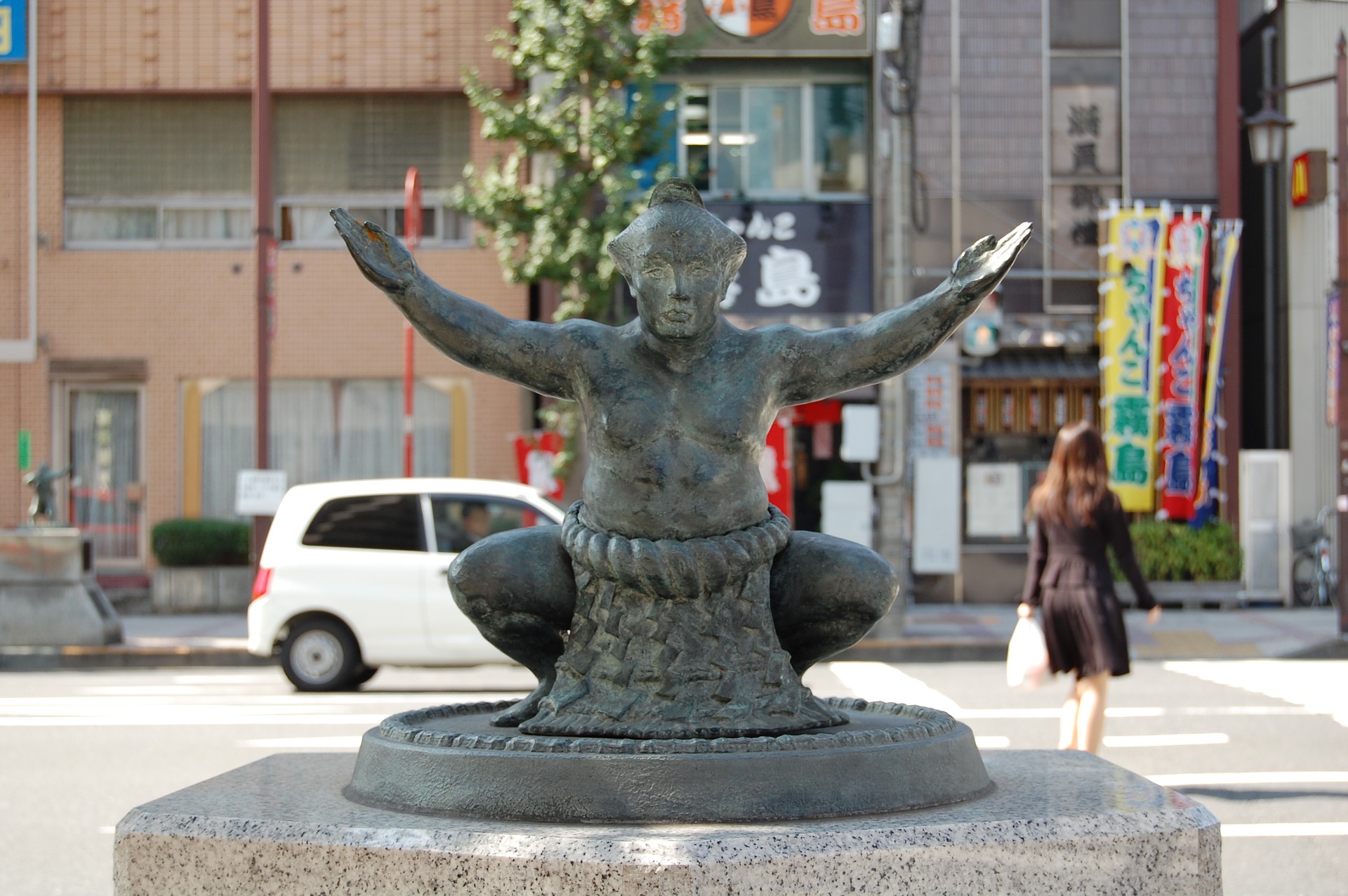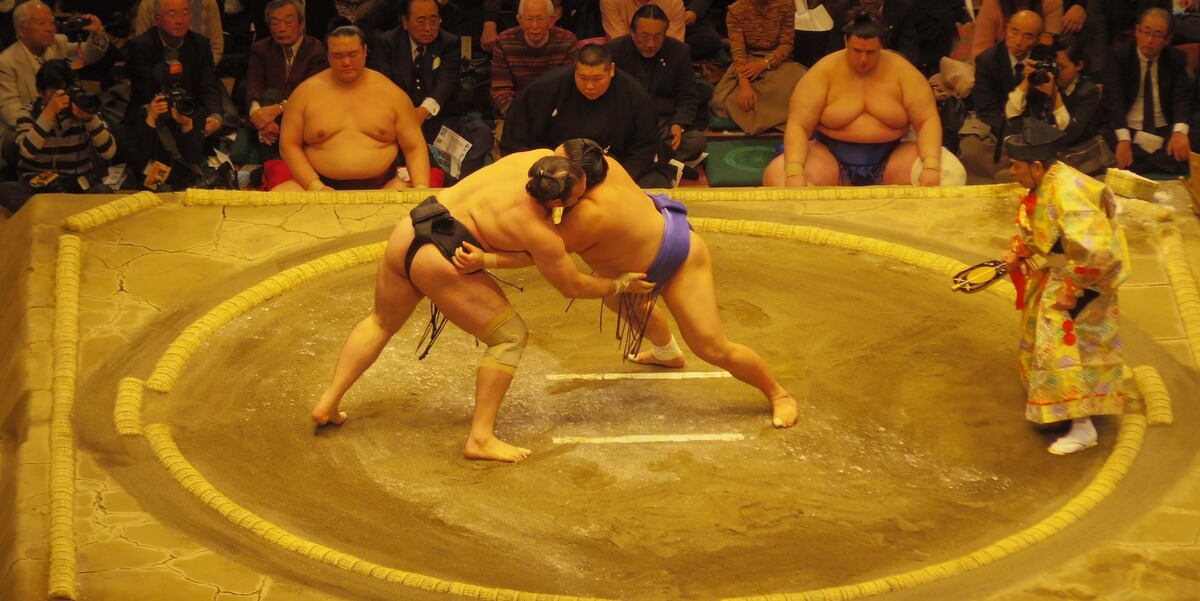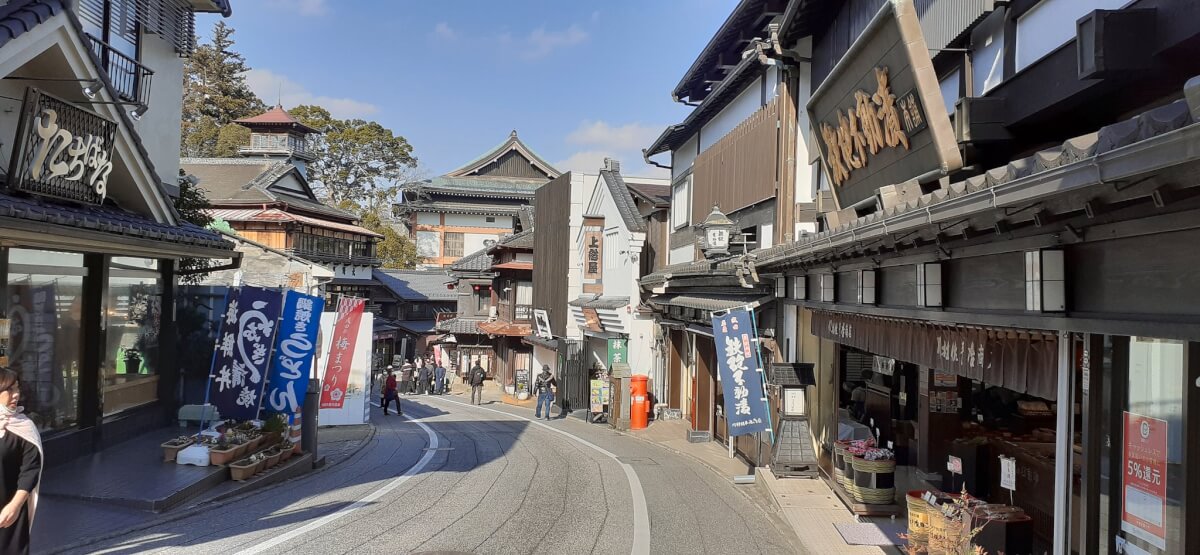Ryogoku is a city of Japanese tradition and history, with many reminders of the Edo period. The city of Ryogoku is known as the sumo capital of Japan – or the world for that matter – because the area is home to Ryogoku Kokugikan. Three of the six annual sumo tournaments are held at this stadium. And the majority of the sumo stables are also located in the area. Though sumo has planted its roots firmly in the city, Ryogoku has more to offer than sumo. There are many unique museums, parks, and more places to see in the area. Here we introduce you to the 10 best things to do in Ryogoku.

1. Ryogoku Kokugikan Stadium
This is the most famous sumo stadium in Japan. Sumo has a strong connection with Shinto, the Japanese traditional religion, and you can recognize many Shinto traditions in the sports such as throwing of salt in the dohyo before the match. Until the beginning of the 20th century, sumo tournaments were held outdoors at shrines and temples. For example, The Ekoin Temple is seen as the spiritual home of sumo because it hosted many tournaments before the first Ryogoku Kokugikan was built in 1909. The current Kokugikan was built in 1985 and hosts three of the in total six annual sumo tournaments in Japan.
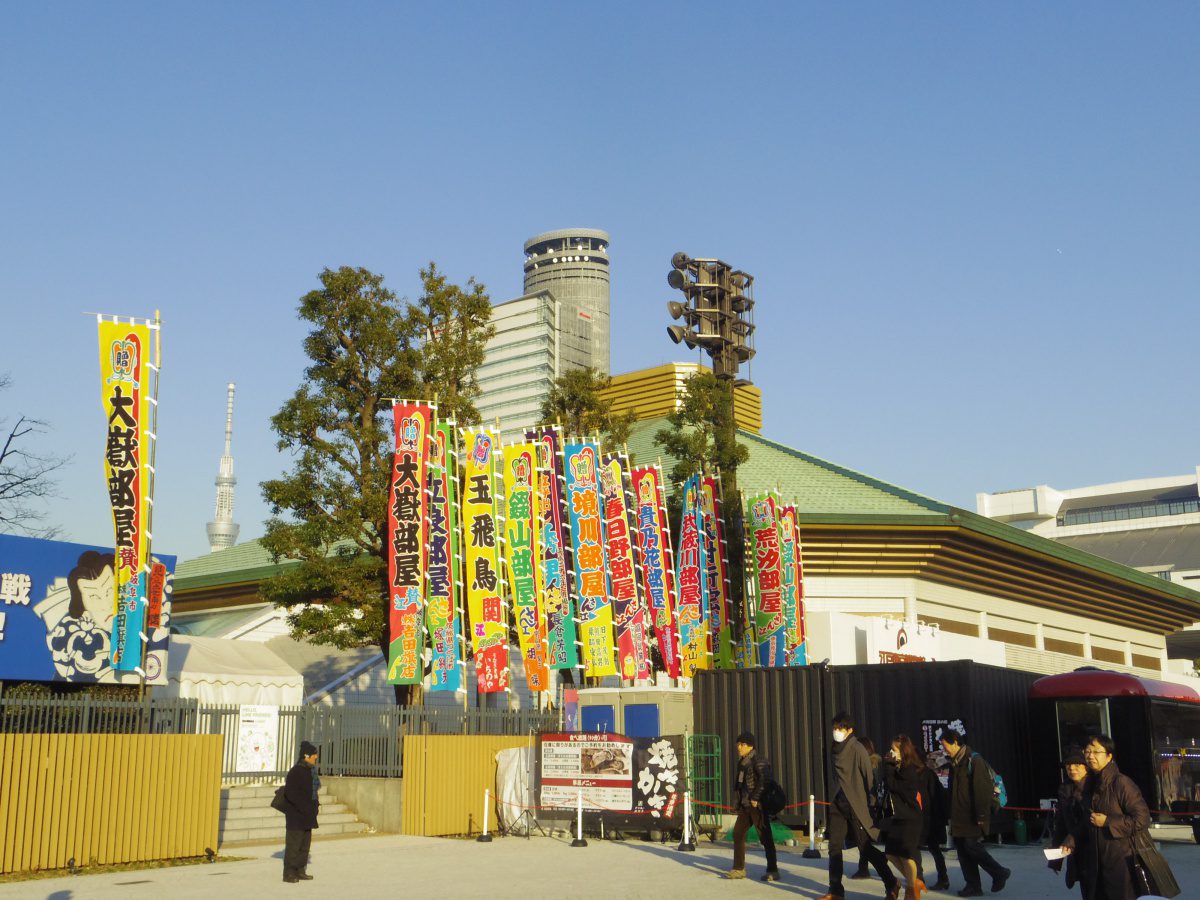
The Grand Sumo Tournament
The Grand Sumo Tournament takes place six times every year in odd-numbered months. The first match of the day begins in the morning. The matches start with the lowest-ranking wrestlers and gradually build up to higher-ranking wrestlers. Therefore, most people arrive at the stadium at around 2pm to watch important matches. It is allowed to eat and drink during the bouts, and there are many vendors for lunch boxes, drinks, and snacks.
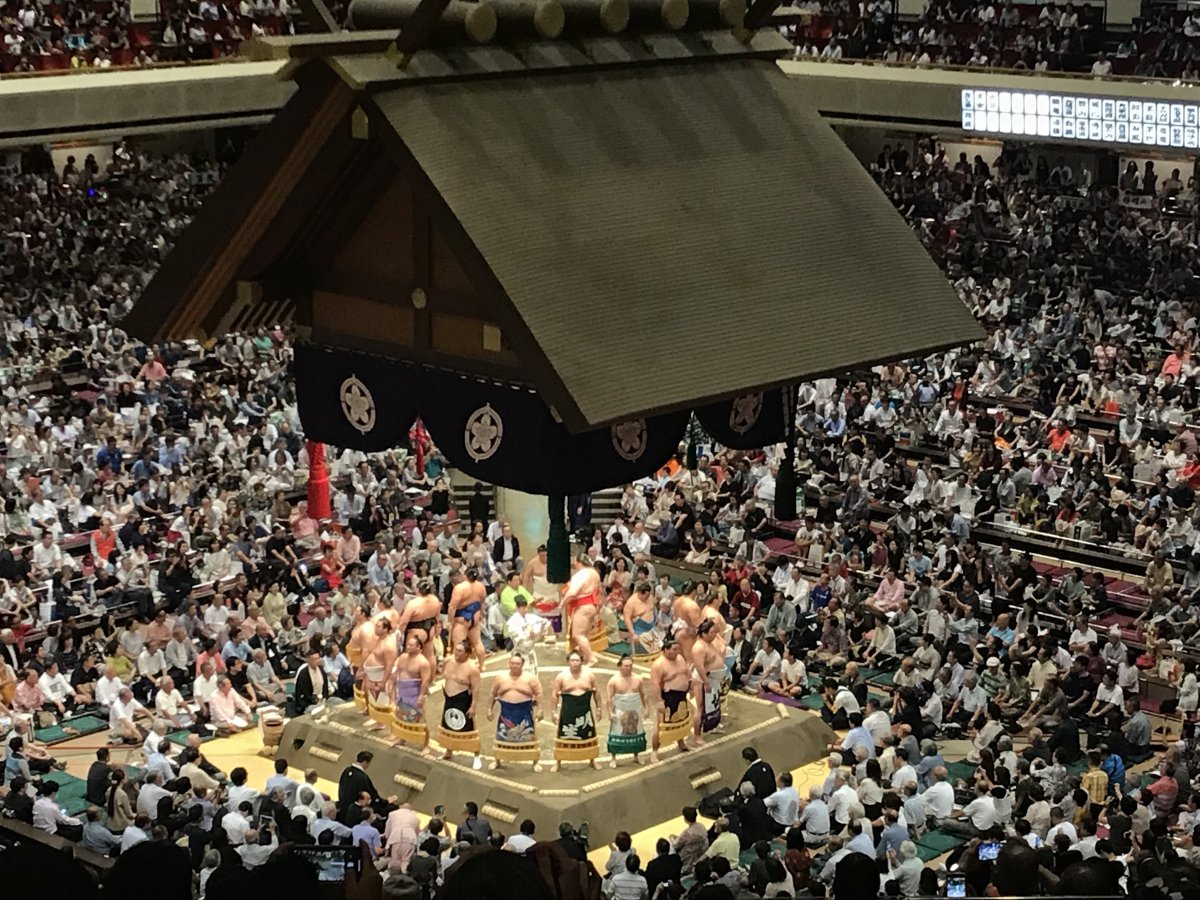
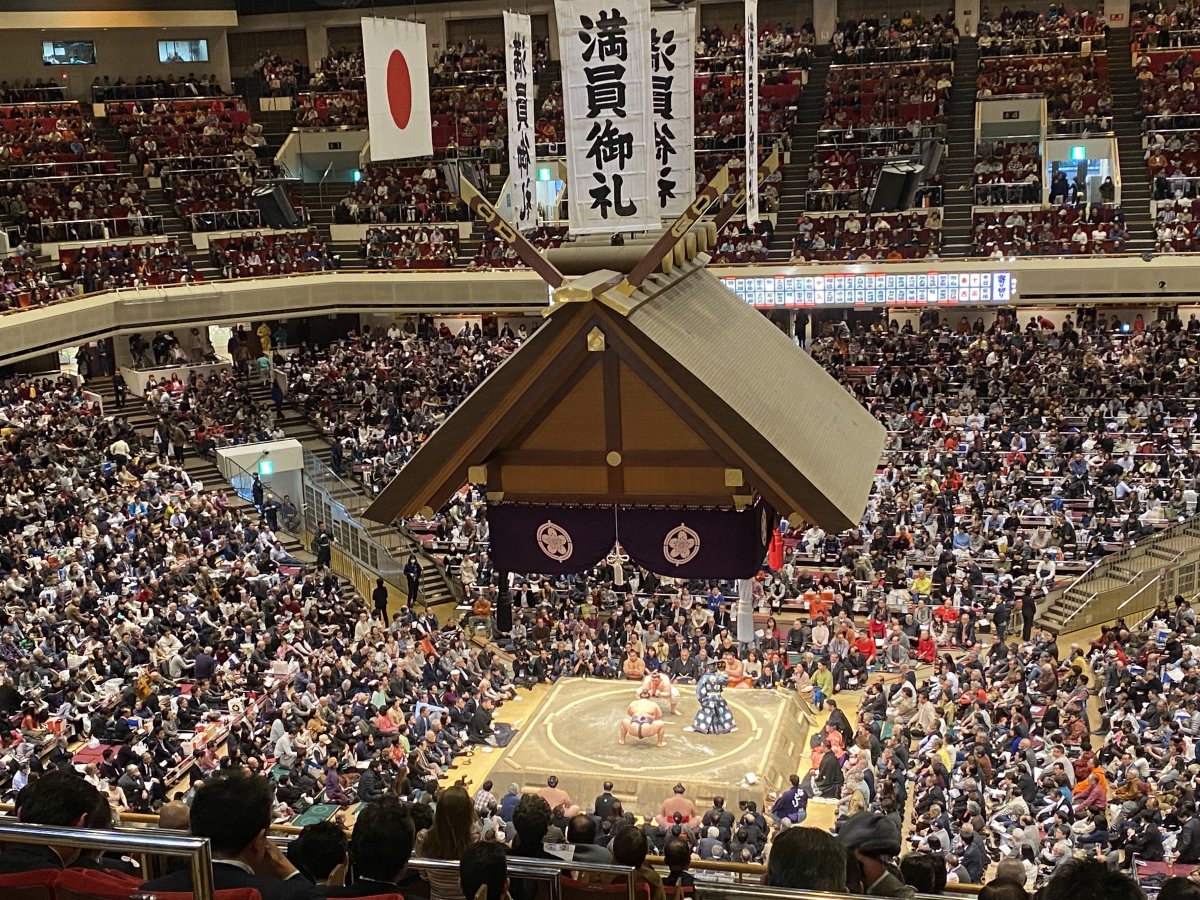
In recent years the sumo tournament has been very popular not only for Japanese sumo fans but also tourists, resulting in difficulties in getting tickets. If you are interested in watching live sumo matches, we highly recommend joining a tour. It not only ensures the tickets but the knowledgeable guide provides information about the history and rules of sumo, the wrestlers, and Kokugikan. It is definitely more fun and interesting to watch the sumo matches knowing some background. Read more about our sumo tours here.
▼Book your Tokyo Sumo Tournament Tour for Osaka now! Tickets are limited!

2. JR Ryogoku Station
Ryogoku Station is the entrance of the sumo world. When you arrive at JR Ryogoku Station, you will be greeted by large portraits and handprints of famous sumo wrestlers of all times. It’s a little like Tokyo’s very own walk of fame for rikishi (sumo wrestlers). Directly connected to Ryogoku Station West Exit is Ryogoku Edo Noren, the former sumo stadium built in 1929. The place was fully constructed and re-opened in 2016 with the aim to have people enjoying the culinary culture of the Edo period. In the middle of Edo Noren, you will see a replica of dohyo, the ring in which sumo games are held. Traditional Japanese restaurants and shops are around the dohyo. Don’t forget to pay the sake shop a visit; here you can taste sake from sake breweries in Tokyo from ¥200 per glass.
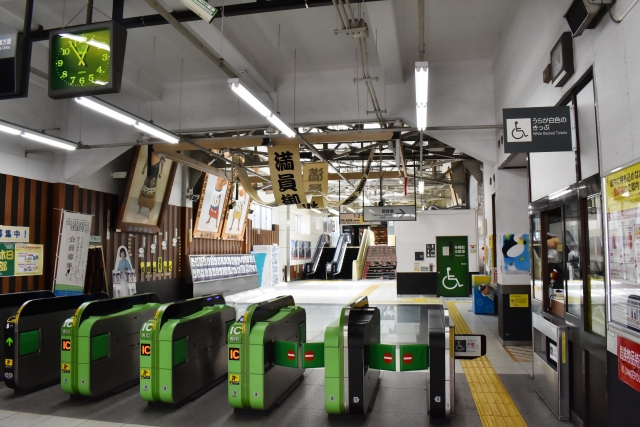
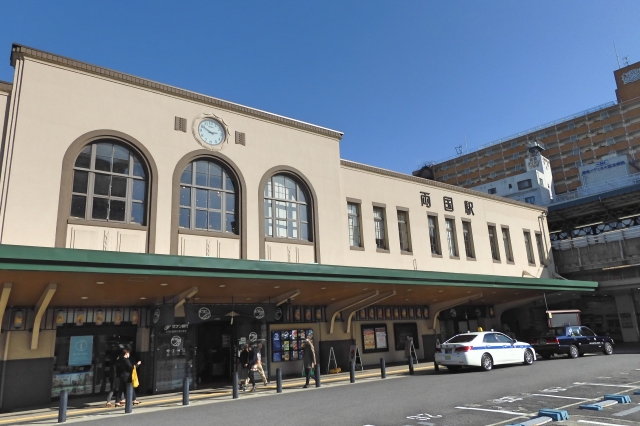
3. The Japanese Sword Museum
The Japanese Sword Museum, founded in 1968, was remodeled and opened its doors again in 2018, along with Kyu-Yasuda Teien Garden where the museum is situated. The museum displays the history and technology of sword-making in Japan. Japanese traditional swords known as katana were used by samurai warriors until only about 150 years ago. Katanas have a reputation for beauty, sharpness and strength. The exhibition on the 3rd floor includes an extensive sword collection and temporary exhibitions which run throughout the year. From a rooftop garden, you can enjoy a view overlooking Kyu-Yasuda Teien Garden and sumo stadium Kokugikan.
Japanese Sword Museum
9.30am – 5pm
Admission ¥1,000
Access
5 minute walk from Ryogoku Station West Exit
4. Kyu-Yasuda Teien Garden
The Japanese Sword Museum mentioned above, is located on one corner of the grounds of Kyu-Yasuda Teien Gardens. This garden is said to be built in the 17th century as the grounds of a samurai residence. The land’s 20th century inheritor, Yasuda Zenjiro (a well-known Japanese entrepreneur), granted the land to the public after his death in 1922. The garden suffered great damage from the Great Kanto Earthquake in 1923, but the land was renovated and became a public park in 1927. You can take a relaxing walk to enjoy the scenery or sit on benches to read or rest.
9am – 4.30pm
The garden is free to enter
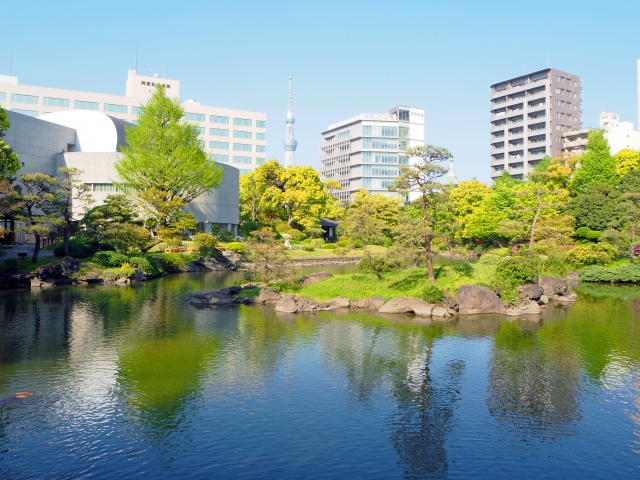
Access
5 minute walk from Ryogoku Station West Exit
5. Sumida River
Sumida River is probably the most famous river in Tokyo. The summer fireworks festival at Sumida River is the biggest fireworks event in Tokyo with approximately 20,000 rockets lighting up the night sky and as many as a million people gathering on the river banks to witness the show. The show kicks off at 7pm and runs for a full 90 minutes.
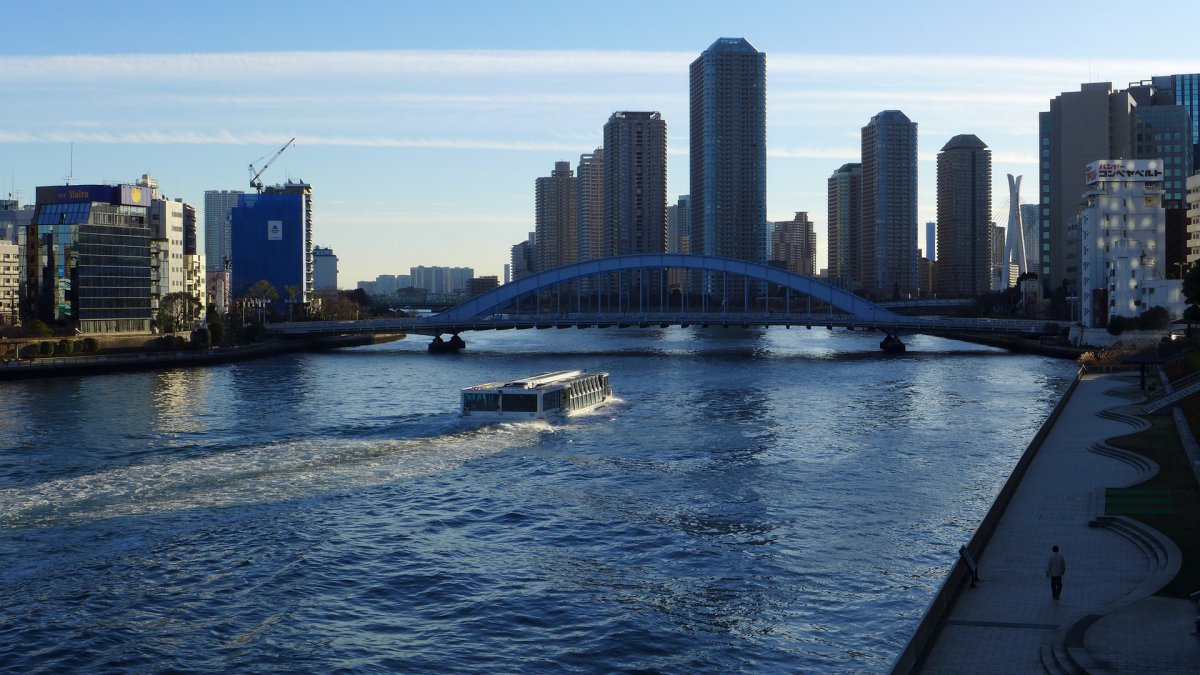
Sumida River is a gateway to Tokyo Bay, and there are water buses and cruising boats that go from Asakusa to Odaiba via Tokyo Bay. These water buses and cruising boats gained popularity especially among tourists in recent years for they offer great views of the city of Tokyo. Especially in spring, it is a great way to enjoy cherry blossoms from a different perspective. There are also night cruises during the season of cherry blossoms and summer. Yakatabune, the Japanese traditional boats, in which you can eat and drink while you view cherry blossoms, is a special way to experience Japanese tradition.
Tokyo Mizube Cruising Line, operated by Tokyo Metropolitan Park Association, offered cruise boats from Ryogoku Bashi Bridge, although currently the Ryogoku Terminal is closed and scheduled to reopen near Sumida Ward Office in summer 2020.
6. Edo Tokyo Museum* Currently closed
The museum’s permanent exhibition illustrates people’s live in the Edo period (1603-1867) and the more recent era in Tokyo. Visitors can learn about the way of life of people, architecture, cultural heritage, political aspects, commercial situations, and many more. There are many life-sized figures and models of bridges and buildings so that the visitors have many good picture-taking opportunities. Guided tours with English-speaking volunteers and other languages are available from 10am to 3pm. An audio guide for a permanent exhibition is also available in multiple languages. 1,000 yen deposit is needed for the audio guide.
Edo Tokyo Museum
9.30am – 5.30pm Sunday – Friday
9.30am – 5.30pm Saturday
Admission fee ¥600
*It’s currently closed due to the renovation. It will reopen in 2025.
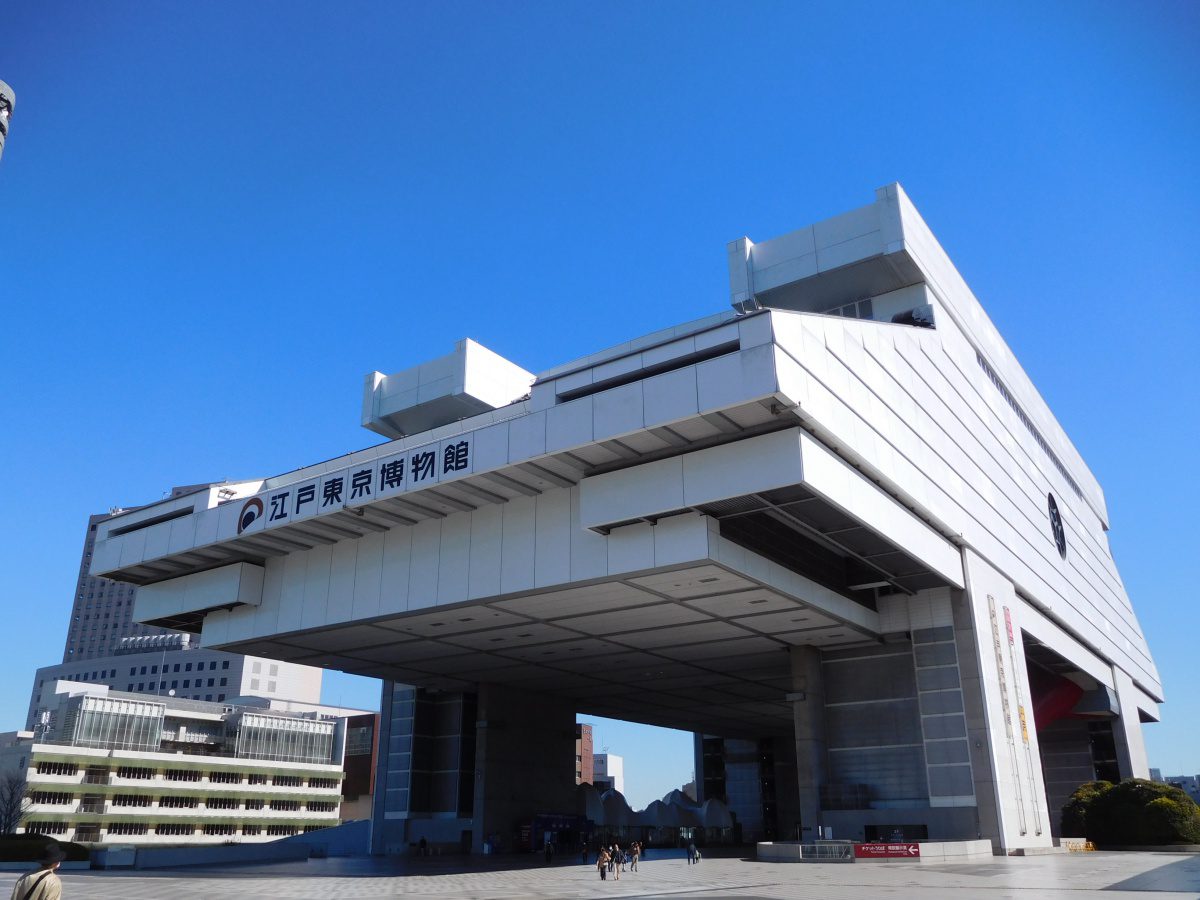
Access
- 3 minute walk from Ryogoku Station West Exit
- 1 minute walk from Ryogoku Station A3 or A4 Exit
7. Sumida Hokusai Museum
This museum is dedicated to Katsushika Hokusai (1760-1849), the famous ukiyo-e painter and printmaker. His well-known artworks include a collection of Thirty-Six views of Mount Fuji. The permanent exhibition on the 4th floor features high-quality replicas of Hokusai’s artworks, information about his life and woodblock prints. Half of the 4th floor and 3rd floor are reserved for the temporary exhibitions. On the 1st floor there is a museum shop and a small library with a good selection of English books about Japanese history, art, religion, and culture as well as books about Katsushika Hokusai.
Sumida Hokusai Museum
9.30am – 5.30pm
Admission ¥400
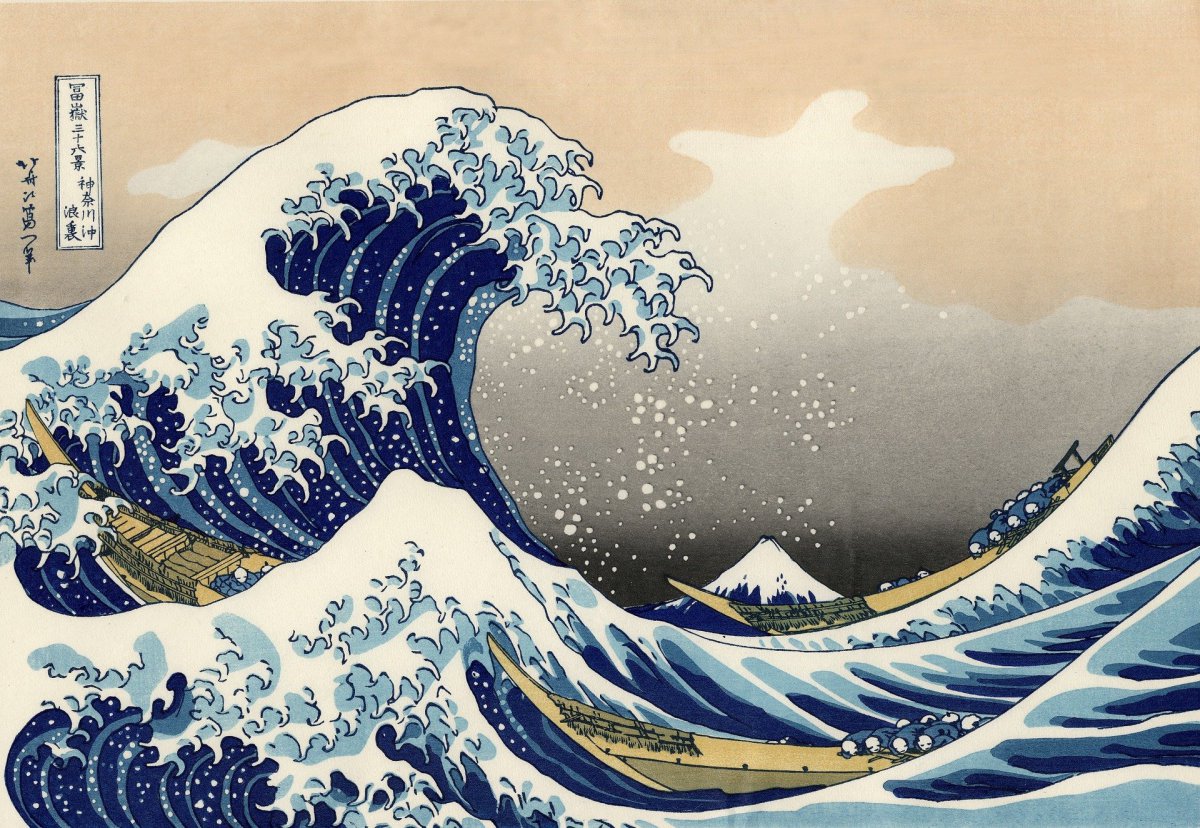
Access
- 9 minute walk from Ryogoku Station East Exit
- 5 minute walk from Ryogoku Station A3 Exit
8. Sumo stables
There is another way to experience Japanese national sport sumo by visiting sumo stables where sumo wrestlers get training. There are 48 active sumo stables in Japan, and over half of them are located in the Ryogoku area. Some of them are open to the public and visitors can watch sumo wrestlers’ morning training which starts at around 8am. Some stables let visitors watch the training through windows for the safety of the visitors, while others allow visitors to watch up close as long as the visitor respects a set of rules. You can visit some sumo stables individually, but we highly recommend joining a tour. Most sumo stables have strict rules and do not speak English.
Read more about our sumo stable tours here
▼Book our Sumo Morning Practice Tour in Tokyo with Wrestler’s Hot Pot Lunch

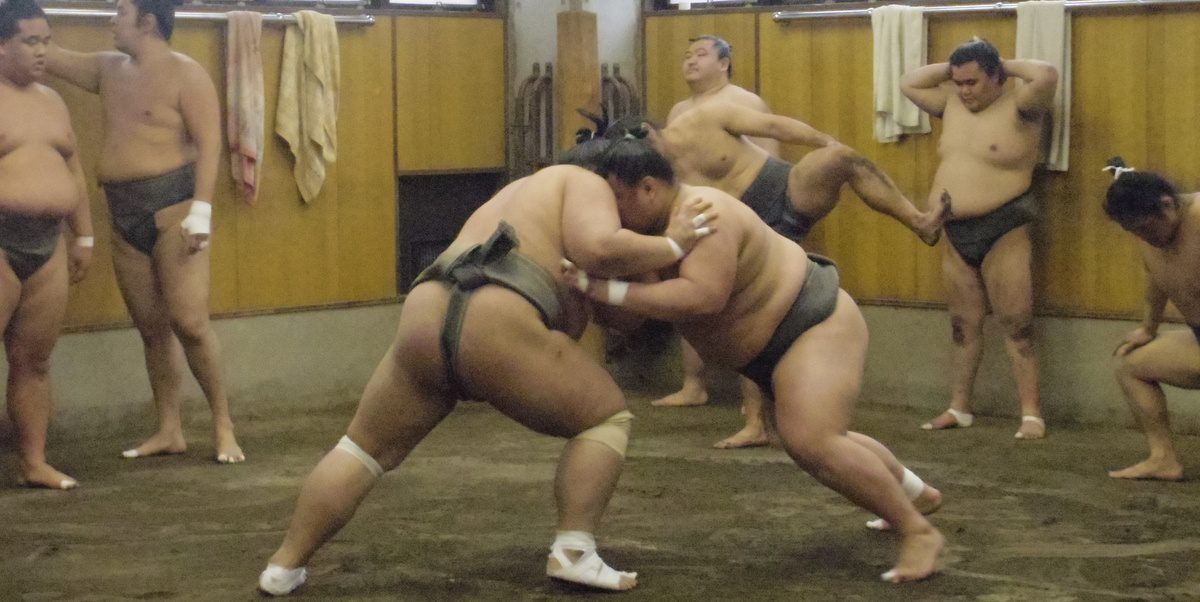
9. Chanko Nabe restaurants
Do you want to know the secret of the strengths of sumo wrestlers? It is the Chanko Nabe, a 20,000 calorie dish that will pile on all the extra weight needed for the sport. Chanko Nabe is a healthy, protein-rich hot pot dish that is filled with seasonal vegetables. In ryogoku you will find many Chanko Nabe restaurants, some of these restaurants are owned by retired professional sumo wrestlers.
Do you want to try this healthy meal? Check out our recommendations of Chanko restaurants
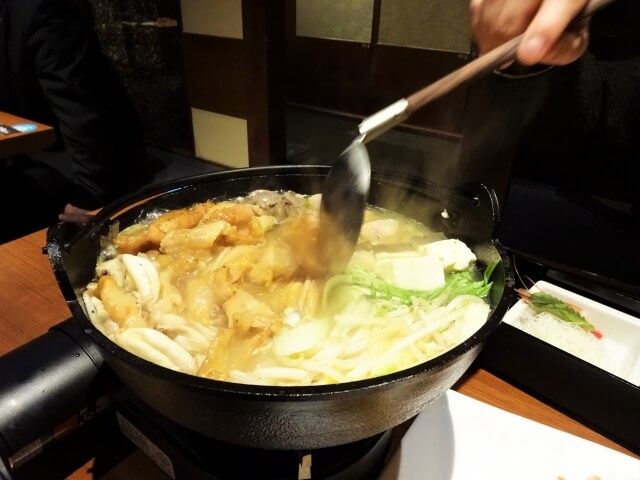
10. Ryogoku Fireworks Museum
This free museum is dedicated to the history and craftsmanship of Japanese fireworks. Inside the museum, there are many displays of the major fireworks festivals in Japan including the earlier mentioned summer fireworks festival at Sumida River, the biggest fireworks event in Tokyo (it lasts 90 full minutes!). This festival dates back to 1733, to honor the many dead caused by a pandemic that swept through Edo (current Tokyo). Today it is one of the largest fireworks festivals in Japan.
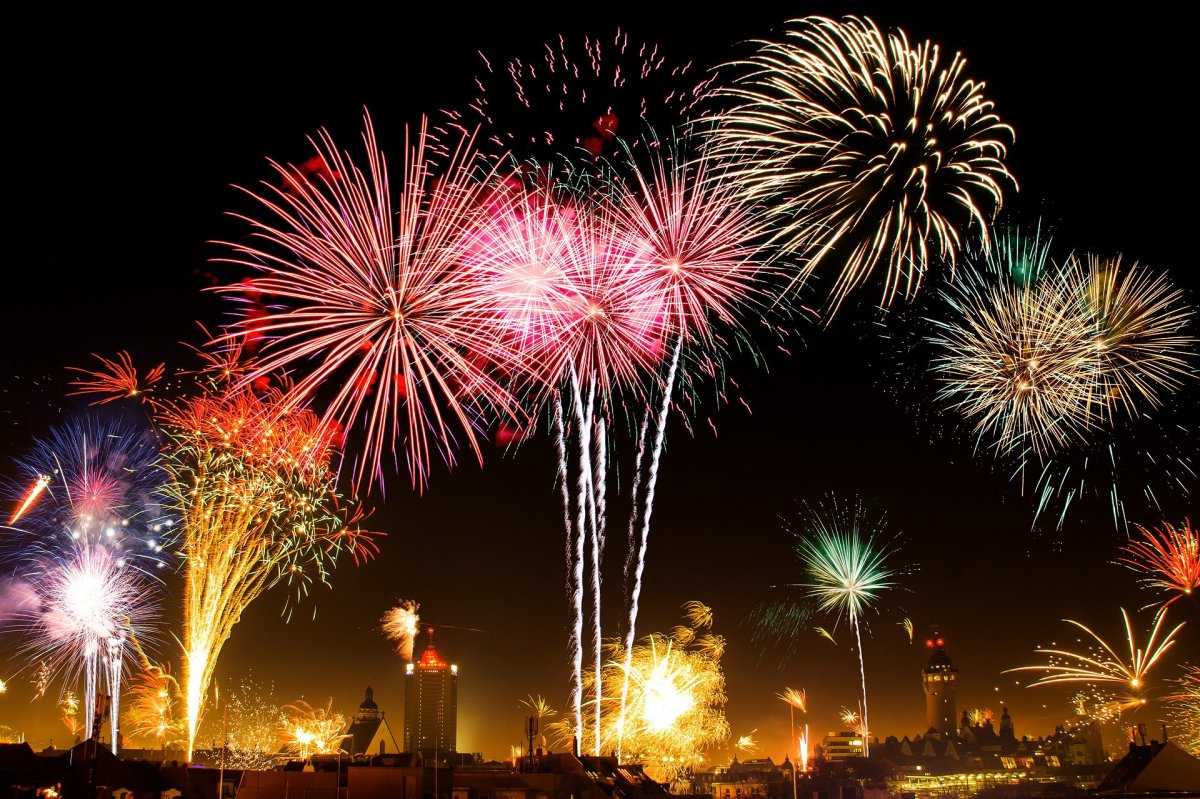
The museum is just next to Eko-in Temple which has been the spiritual home of sumo since tournaments started to be held here from 1768 until the first Ryogoku Kokugitan was built in 1909.
Ryogoku Fireworks Museum
12pm – 4pm (Thursday – Sunday)
Free admission
Access
- 5 minute walk from Ryogoku Station
- 10 minute walk from Ryogoku Station
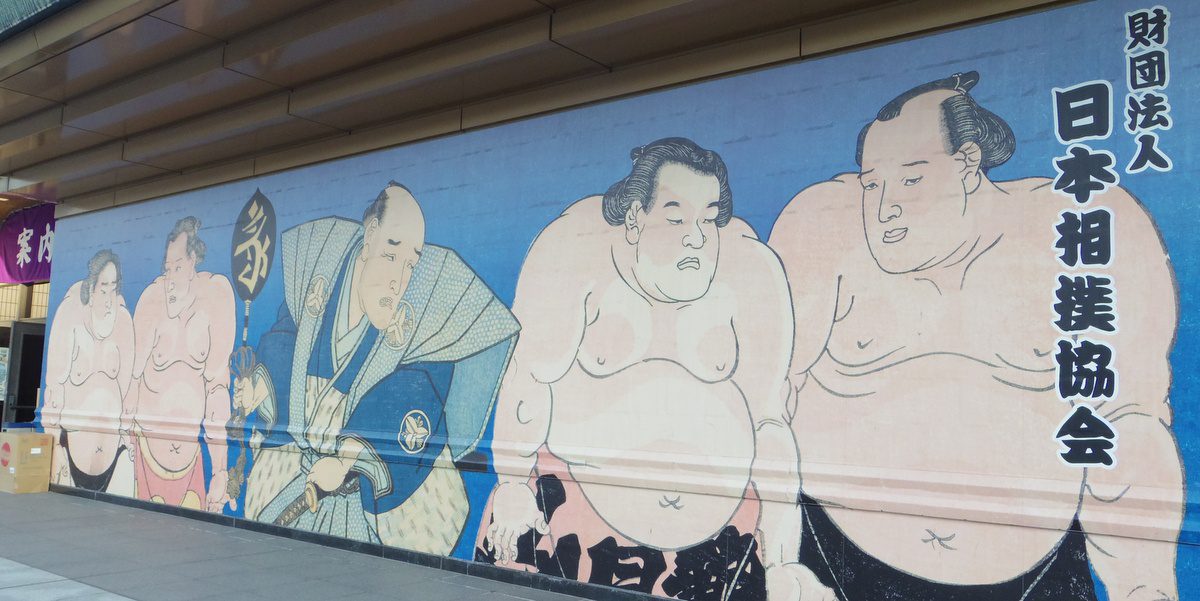
These are our top recommendations on what to do and see in Ryogoku. As you know by now, the area is well known for its connection to sumo. When you walk around the area, you will easily spot the many hints about Japan’s national sport. We recommend you to visit the Grand Sumo Tournament when you have the chance, it is a fun and unique experience! If you need help getting tickets, or if you would like to join a sumo tour, contact us!
Follow us on Instagram or Facebook for more travel inspiration. Or tag us to get featured!
Happy traveling!
This post contains some affiliate links. When you click through and make a purchase we may receive some commission, at no extra cost to you.
